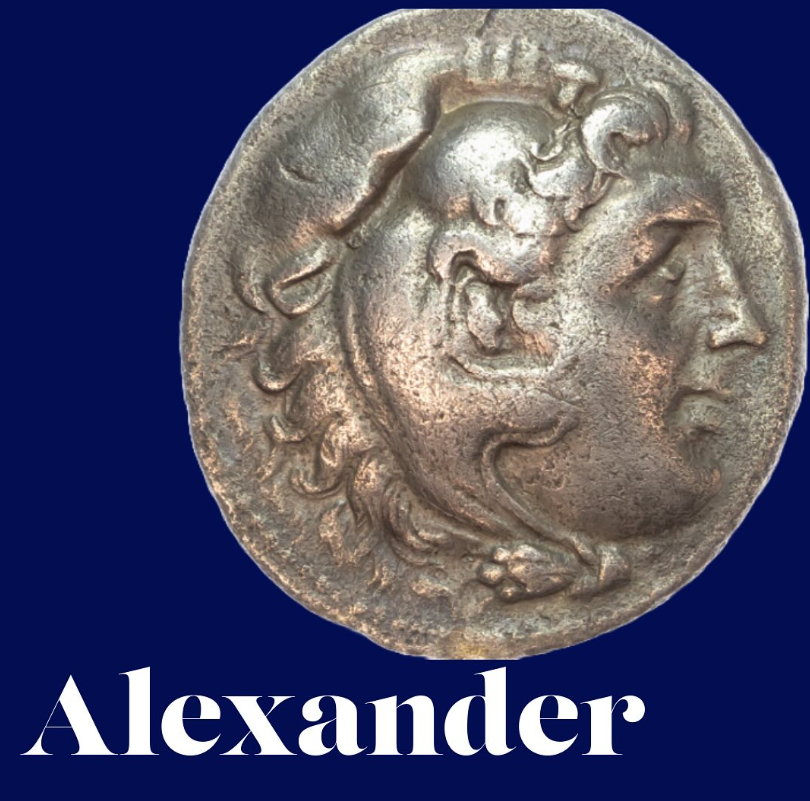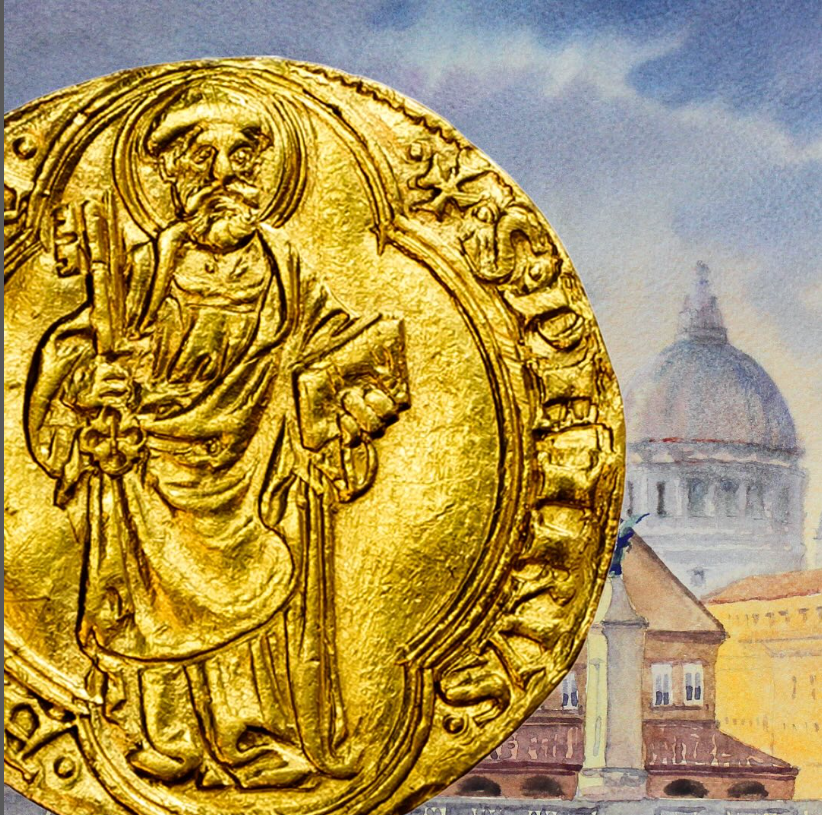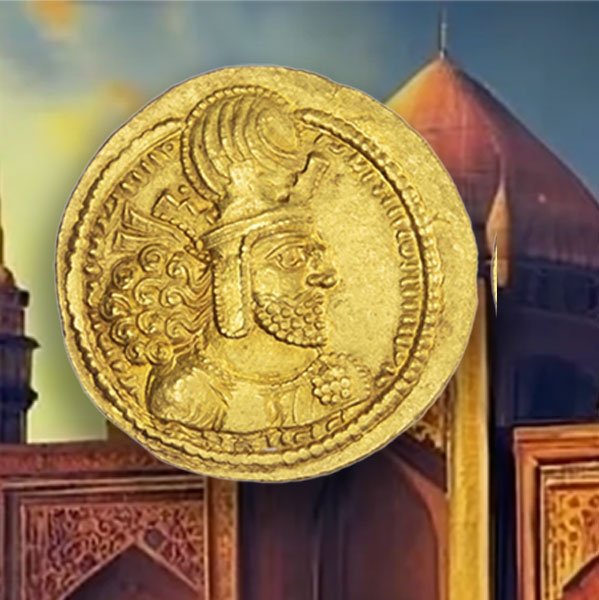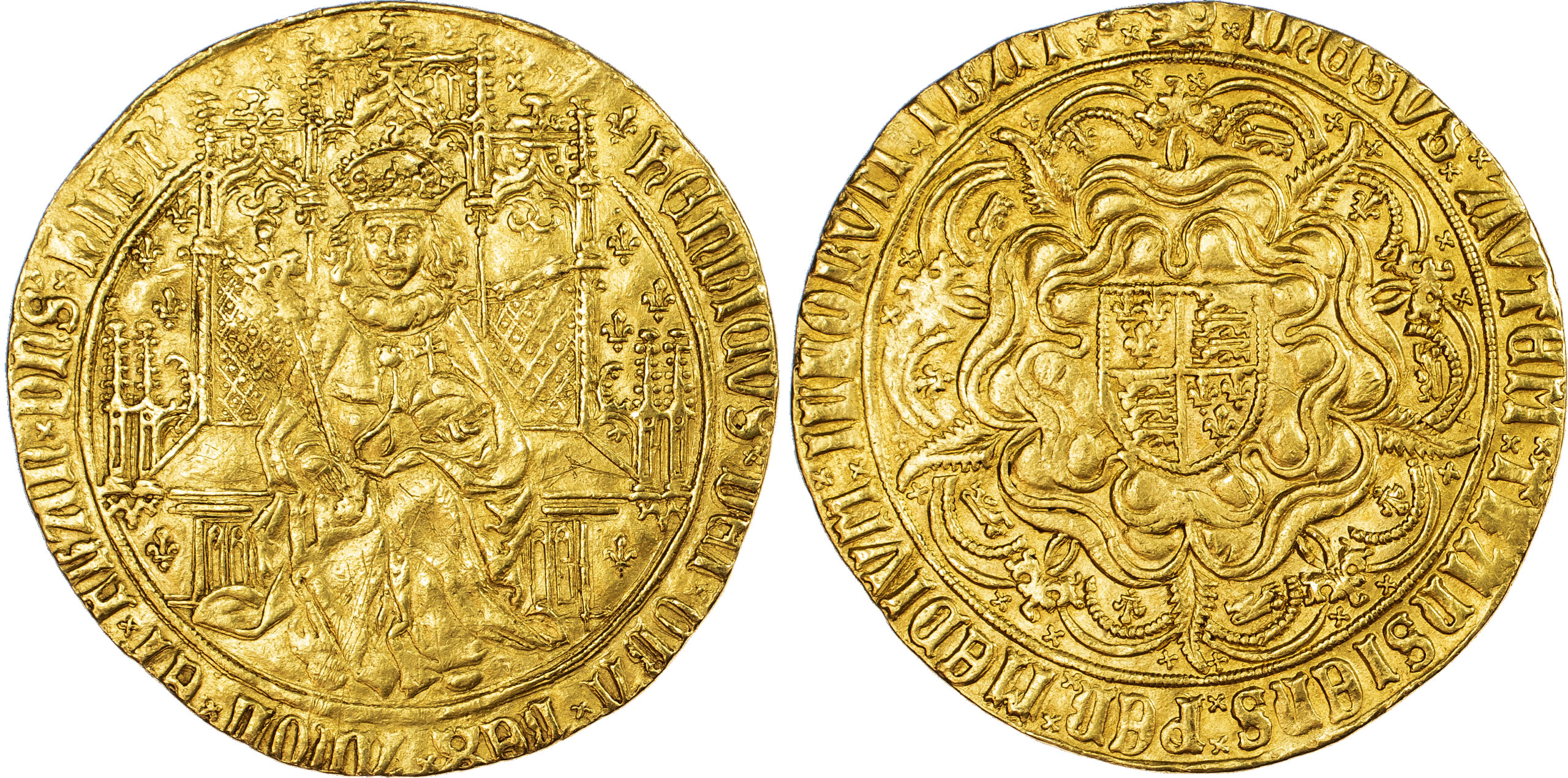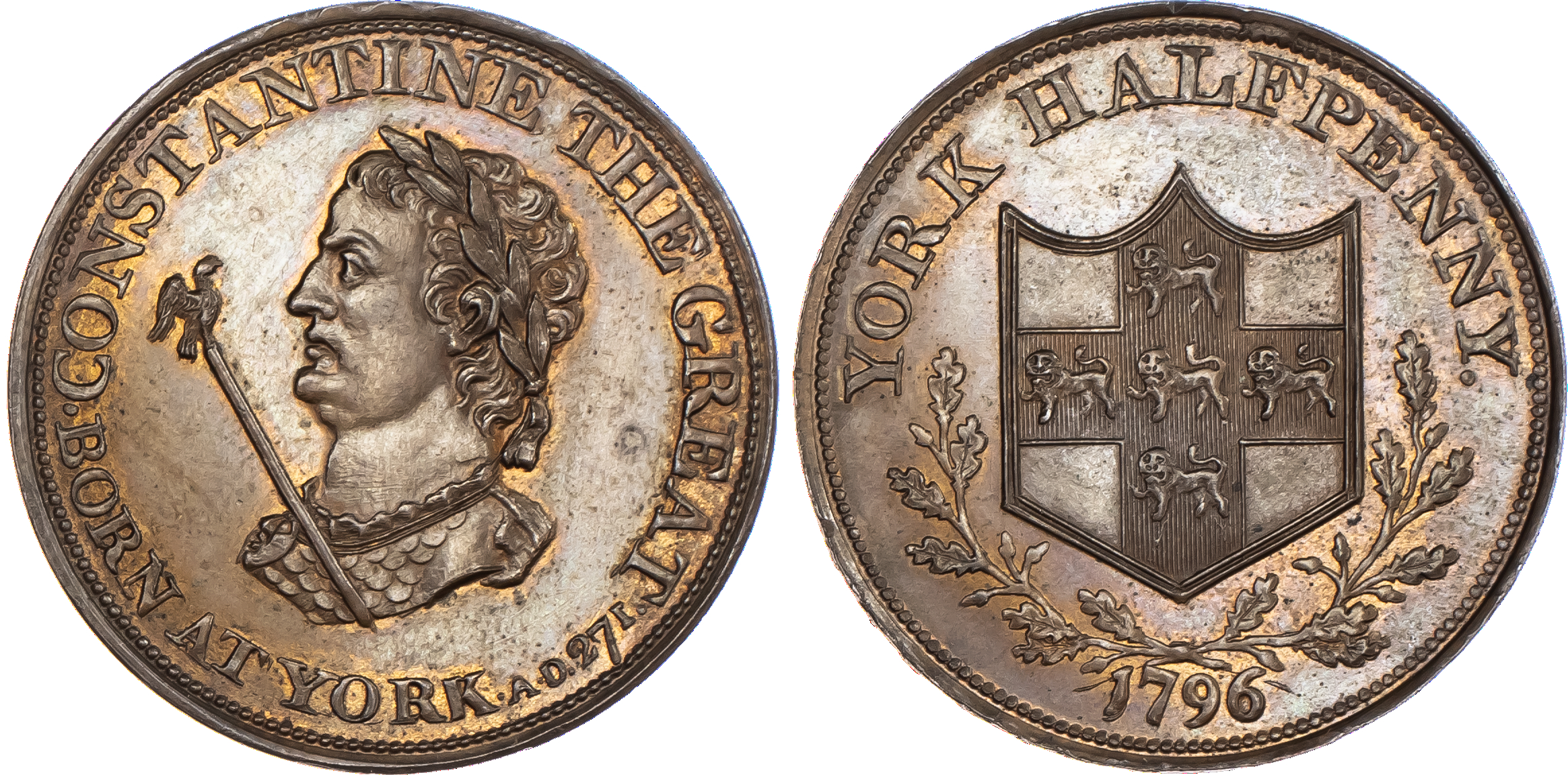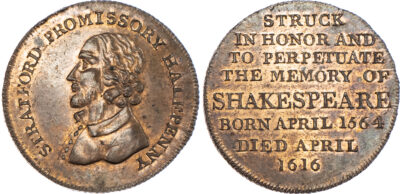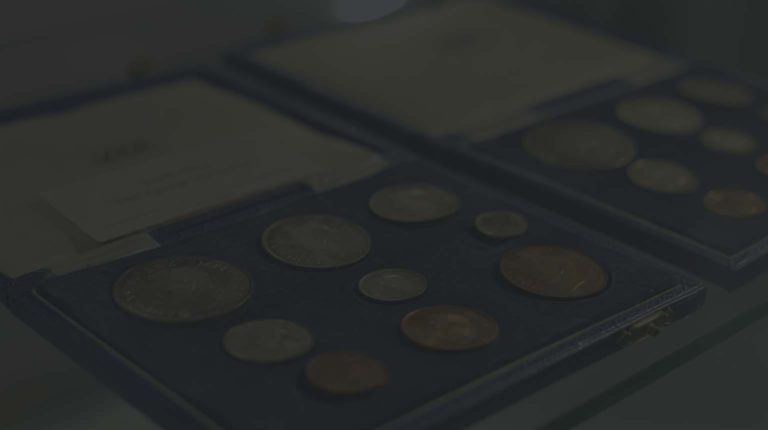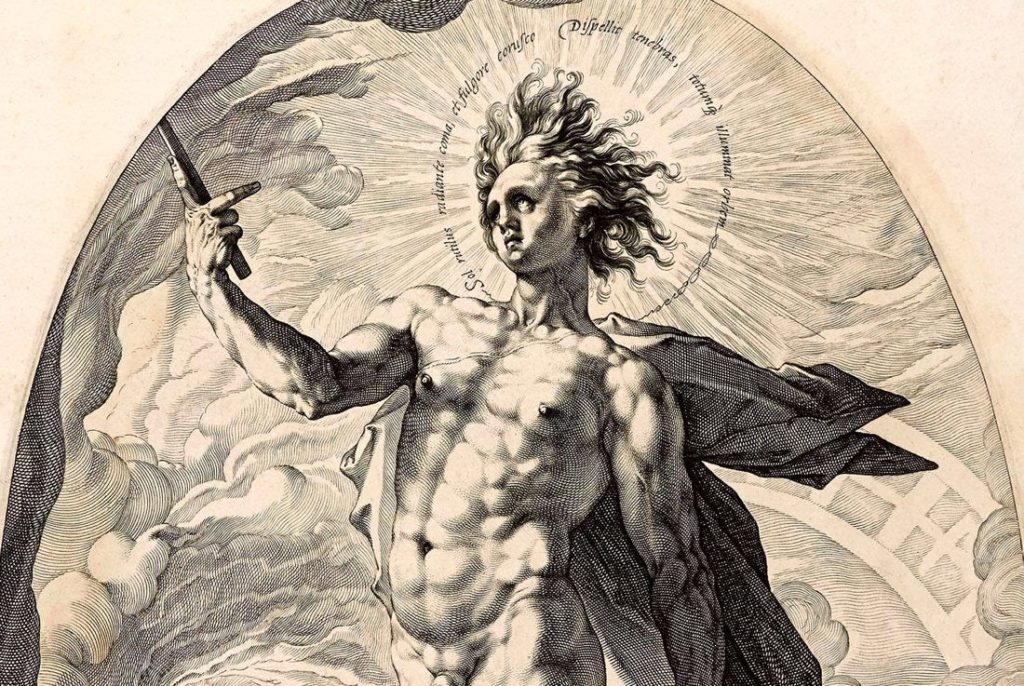
The symbols struck on coins were chosen carefully. They reveal the agendas and priorities of the rulers at the time and, more importantly, represent the ideals by which they ruled.
Mythologies of Roman and Greek deities were used to provoke associations between the ruler’s sovereignty and the divine powers of the gods and goddesses that appeared on their coins.
Zeus/Jupiter
God of the sky and thunder
Zeus was the son of Cronus, a Titan ruler overcome with fear of being overthrown by his offspring. As a result of this obsession, Cronus devoured all his children as soon as they were born but his sixth son survived and freed his siblings including Poseidon and Hades with whom he divided dominion of the world.
While he was married to Hera, Zeus had numerous mistresses and many heroic offspring including Athena, Apollo, Artemis, Hermes, Persephone, Dionysus, Perseus, Heracles, Helen of Troy, Minos, and the Muses.
Zeus’s symbols include the thunderbolt, eagle, bull and oak. As the ruler of all gods, he was the most important deity in official religion and came first when rulers paid their respects and religious sacrificies. This is why Jupiter features on numerous Greek and Roman coinage. However, his appearance on the coins of Alexander the Great is probably related to the story of his divine lineage, which his mother Olympias promulgated claiming that a thunderbolt stroke her womb when she was pregnant with Alexander, making Zeus his father.
Zeus seated left on throne on this Kingdom of Macedon silver drachm, holding eagle and sceptre, spearhead behind.
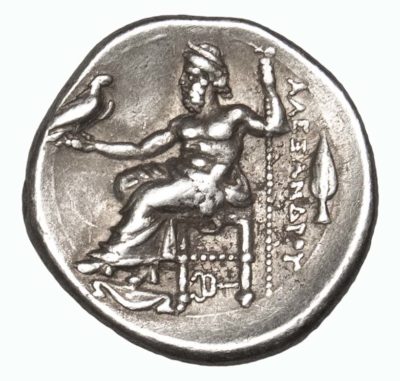
Hera/Juno
Queen of the Gods
Also the offspring of Cronus and Rhea, Hera is the sister-wife of Zeus. In the Greek mythology, she is the jealous wife of a king with numerous lovers and is thus seen as the protector of weddings and marital unions.
Hera is the mother of Ares, god of war; Hebe, goddess of youth; Eileithyia, goddess of childbirth; and Hephaistos, god of metallurgy.
Her symbols include the pomegranate, peacock feather and sceptre; however, she is represented on coins far less frequently than Zeus. The coin below depicts the cult image of Hera from her sanctuary on the island of Samos, Greece, where it stood since 8th century BC and was renewed in Roman times. Worshippers came to the temple with offerings such as pomegranates and wooden votive.
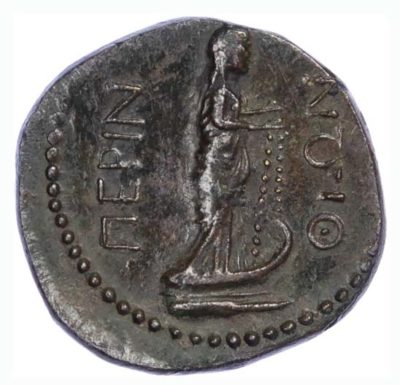
https://www.baldwin.co.uk/product/nero-bronze-unit-of-perinthus/
Apollo
God of MUSIC AND POETRY
Apollo was the son of Zeus and known for being the god of archery, music and dance, truth and prophecy, healing and diseases, the Sun and light, poetry, and more. He was the perfect embodiment of physical superiority and moral virtue and is depicted in many works of art to be the most beautiful of the gods. As the “averter of evil,” he is often depicted with a laurel, a bow and arrow, or a lyre in his hands.
He appears at intervals on Imperial coinage from Augustus to Carausius and then falls out use in the 4th century.

Octavian considered Apollo to be his patron deity and built the famous temple of Apollo on the Palatine Hill in Rome, close to his residence. He was grateful to the god for his victories over Sextus Pompeii and Antony and Cleopatra.
Athena/Minerva
Warlike goddess of wisdom, war and patroness of the arts
Greek mythology portrays Athena to be the goddess of wisdom and strategy and one of the twelve main Olympian gods. She is the protector of the city of Athens, where her most famous temple – the Parthenon on the Acropolis is situated. For Romans Athena’s identity is linked to the Etruscan deity Minerva, who is said to have emerged from her father’s head as a fully developed adult dressed in armour. The Greco-Roman deity thus represented both wisdom and strength as she became evoked in times of triumphs and military successes.
She is often depicted with an owl, an olive tree or a snake, symbols of knowledge.
The coins of Corinth are famous for their imagery of Athena and Pegasos, tied to the myth of Athena helping the hero Corinthian Bellerophon tame Pegasos, the winged horse, with the help of the golden bridle and subdue him.
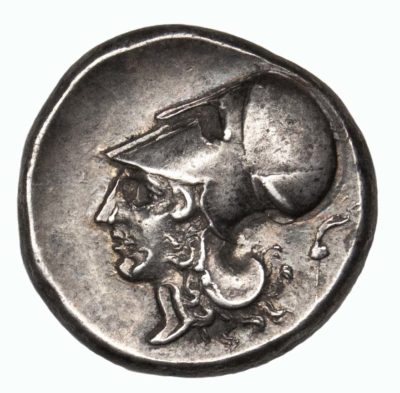
https://www.baldwin.co.uk/product/corinthia-corinth-silver-stater-3/
Hercules/Heracles
God of strength and virtue
While Hercules was the son of Zeus, his mother was a wise and beautiful mortal named Alcmene. Hera, the wife of Zeus, is said to have been so angered by Hercules’ birth that she sent witches and snakes to kill the infant. In an attempt to protect her child from these attacks, Alcmene abandoned Hercules in the woods.
Goddess Athena found the recently orphaned child and brought him to Hera for nourishment and it was eventually her breast milk that imbued him with the strength with which he is famous in all Greek and Roman mythology.
On the coin below from Tarsos there is a rare depiction of Herakles facing forward. He is wearing the lion headdress, a skin of the Nemean lion which had the impenetrable golden fur. Herakles stunned the beast with his club and strangled him to death.
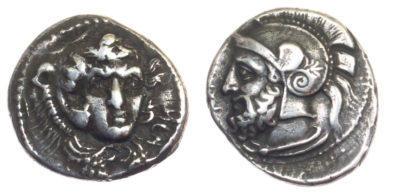
https://www.baldwin.co.uk/product/tarsos-pharnazabos-silver-stater/
Ares/Mars
God of war
In Greek mythology, Ares represent a wild recklessness in his approach to war—a striking contrast to his sister Athena, a wise and strategic general. While admired for his valour, the god of war is also seen as a dangerous force capable of savage destruction.
The Roman counterpart of Ares, Mars, is seen as more important and dignified figure however. Its mythology names Mars as the father of the founders of Rome and is second in importance only to Jupiter (Zeus in Greek mythology).
His attributes include spear, trophy and shield.
On this coin of Constantine I, Mars is depicted advancing right, holding shield and spear. This iconographic solution for depicting Mars was hugely popular and featured on numerous Roman coins throughout the empire. Mars is shown heroically nude, with his attributes, in battle stance. Emperor Augusts was the first one to integrate Mars into the Imperial cult and created the cult of Mars Ultor – Mars the Avenger. Thereafter, the temple became a point of departure of magistrates into the military campaigns.
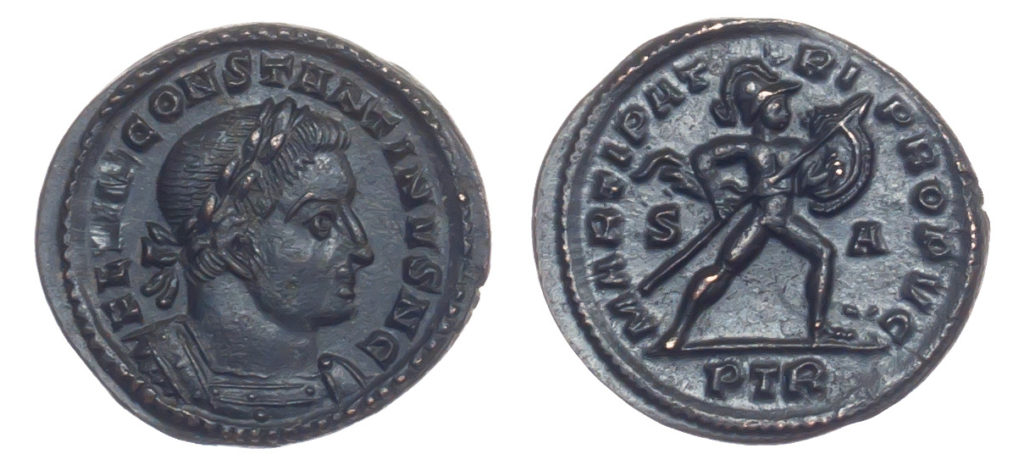
Hermes/Mercury
MESSENGER OF THE GODS, GOD OF COMMERCE AND COMMUNICATION
Also known as the god of boundaries and protector of travellers, Hermes was the deity who moved freely between the worlds of the mortals and the divine and served as a mediator to them both. He is often depicted in ancient art wearing winged sandals, winged cap or holding the caduceus, two snakes coiled around a staff, a visible sign of authority. As the god of traders and financial gain he is often depicted with a small money purse. The Romans adopted this figure into their religion through the identity of Mercury.
Hermes was adopted by only a half-dozen Roman provincial cities, appearing without name or title.
On the reverse of this bronze serrated coin of Septimius Severus, Hermes is pictured nude holding a caduceus and a coin purse, his main attributes as a deity of commerce and protector of traders
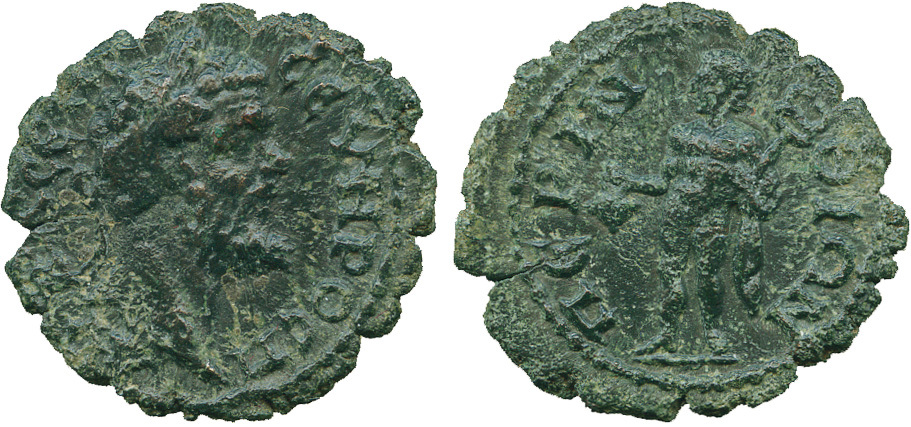
https://www.baldwin.co.uk/product/septimius-severus-ae-18/
Poseidon/Neptune
God of the sea, storms
Poseidon served as a protector of seafarers and is regarded to have power over both land and sea. Like Zeus, Poseidon was the son of Cronus, a cruel Titan who ate his offspring in the fear of being overthrown.
After the fall of the Titans, Poseidon drew lots for the division of cosmos with his brothers and got the sea as his domain. He is depicted in art riding a chariot pulled by seahorses. His symbols include a a trident, he is often depicted in the company of sea creatures and sea nymphs.
He is depicted in art riding a chariot pulled by horses that could ride on the sea. His symbols include a three-pronged fish spear or a trident.
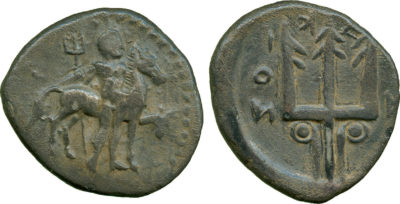
https://www.baldwin.co.uk/product/crete-rhaukos-ar-stater/
This particular coin relates to the myth when Poseidon entered a contest with the goddess Athena for dominion over Athens and produced the very first horse as a gift. However, the king refused him the prize and in anger Poseidon afflicted the land with drought.
Aphrodite/Venus
Goddess of beauty and love
Aphrodite was a symbol of perfect female beauty. She is often depicted nude and symmetrical and was said to be desirable and unattainable.
Many myths surround Aphrodite’s birth. While some say that she might have been the daughter of Zeus and Titaness Diona, other myths portraying her emerging from the waters on a scallop shell, fully-grown and lovelier than any woman before her.
Although married to Hephaestus, the god of blacksmiths and metalworking, Aphrodite is romantically linked to many other Olympians, most famously Ares, but also Poseidon and Hermes as well as three mortals.
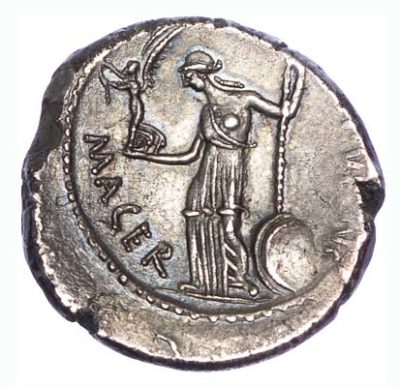
Julius Caesar chose Venus as the divine ancestor of Julio-Claudian Dynasty, with an epithet Venus Genetrix . On the coin below, there is a portrait of Julius Ceasar with his divine ancestor – Venus – holding a Victory and sceptre. In Rome, on the Forum of Caesar he built a temple dedicated to Venus Genetrix with her cult statue.


